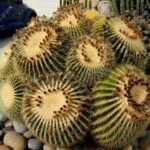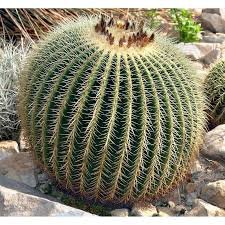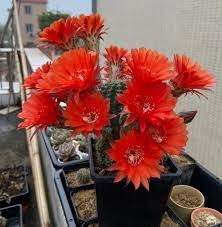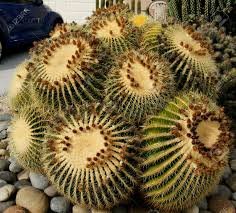
Feng Shui, an ancient Chinese philosophical system, has been deeply integrated into many aspects of Chinese life, including architecture, interior design, and landscape planning. One of the most significant and intricate areas where Feng Shui is applied is in the design and construction of Chinese gardens. The principles of Feng Shui in garden design emphasize the harmonious relationship between humans, nature, and the flow of energy, known as Qi (or Chi). When done correctly, a Feng Shui garden is more than just a place of beauty and tranquility—it becomes a space that nurtures health, prosperity, and spiritual well-being.
In this article, we will explore the core principles of Feng Shui as they apply to Chinese garden design, the elements and concepts that shape the garden, and how to use these guidelines to create a space of balance and vitality.
1. The Role of Feng Shui in Chinese Garden Design
Feng Shui, which translates to “wind” (feng) and “water” (shui), is based on the belief that the flow of energy (Qi) in a space directly impacts the lives of its inhabitants. The ancient Chinese believed that nature, including gardens, plays an essential role in shaping the fortune, health, and happiness of those who dwell within it. By applying the principles of Feng Shui, a garden can be designed to promote positive Qi, enhance tranquility, and attract prosperity, good fortune, and vitality.
Chinese gardens are designed to recreate the ideal balance between human existence and the natural world. The elements of nature, such as water, plants, rocks, and the land itself, are carefully arranged to create harmony and balance. Feng Shui, with its focus on the energetic flow of Qi, is the guiding principle behind this arrangement.
2. The Five Elements in Feng Shui Garden Design
The five elements of Feng Shui—Wood, Fire, Earth, Metal, and Water—are fundamental to the design and layout of a garden. Each element is associated with specific energies, and by incorporating them in balanced proportions, a Feng Shui garden can be created to nurture harmony and positive energy. Here is how each of the five elements can be used in garden design:
2.1 Wood (Growth and Vitality)
The Wood element is essential for growth, vitality, and renewal. In a Feng Shui garden, the Wood element is often represented by trees, plants, shrubs, and flowering vines. Green is the color that represents the Wood element, and it symbolizes fertility, growth, and renewal.
- Trees and Plants: Tall trees are often placed in the garden to symbolize strength and stability. Flowering plants represent beauty and vitality. Additionally, evergreen trees are preferred because they symbolize endurance and longevity.
- Climbing Vines: Vines, which grow and expand over time, are symbolic of progress, prosperity, and development.
To enhance the Wood element, include healthy, thriving plants in your garden, particularly in the east and southeast areas, which are linked to health and prosperity in the Bagua map.
2.2 Fire (Passion and Energy)
The Fire element represents passion, warmth, and energy. In a garden, the Fire element is represented by bright colors, flowers, and light. It is also often symbolized by the sun and candles.
- Bright Flowers: Flowers in shades of red, orange, or purple can represent the Fire element. These vibrant colors invoke energy, excitement, and creativity. Examples include peonies, lotus flowers, and poppies.
- Lighting: Lanterns, torches, and candles can be used to evoke the Fire element. Fireplaces or fire pits can also be strategically placed to enhance warmth and passion in the garden.
To maximize the Fire element, position bright flowers in the south or southwest of your garden, as this sector governs fame, reputation, and relationships.
2.3 Earth (Stability and Grounding)
The Earth element symbolizes stability, support, and grounding. It is represented by soil, rocks, mountains, and ceramic or stone statues in a garden. Earth provides the foundation upon which everything else rests.
- Stones and Rocks: Incorporating large stones or rocks can create stability and permanence in the garden. Rocks are often used to symbolize mountains or natural formations that evoke strength and resilience.
- Soil and Terracotta: Fertile, rich soil is essential for plant growth, symbolizing abundance and prosperity. Terracotta pots, sculptures, or statues also represent the Earth element and can enhance the grounding energy of the garden.
Earth elements are best placed in the center of the garden or in the northeast or southwest areas, as these locations are associated with health, relationships, and grounding energy.
2.4 Metal (Clarity and Precision)
The Metal element symbolizes clarity, precision, and discipline. It is represented by metal sculptures, bells, statues, and tools. Metal encourages mental focus, efficiency, and protection.
- Metal Sculptures or Statues: Metal objects, especially those in silver, gold, or white, are used to symbolize the clarity and strength of the Metal element. Bronze or copper statues of animals or symbolic creatures (like lions or dragons) are often used.
- Wind Chimes: Wind chimes made from metal or bamboo are not only decorative but also help to clear negative energy and encourage a clear, peaceful atmosphere.
To enhance the Metal element, place metal objects in the west or northwest sectors of the garden. This can help improve creativity, mental clarity, and attract helpful people into your life.
2.5 Water (Abundance and Flow)
The Water element represents abundance, wisdom, and serenity. It is one of the most important elements in a Feng Shui garden and is often represented by pools, streams, ponds, and fountains. Water is believed to bring prosperity, good fortune, and vitality.
- Water Features: Incorporating a water feature such as a pond, fountain, or small stream can activate the Water element. The sound of running water creates a calming atmosphere and symbolizes the flow of life and abundance.
- Reflective Surfaces: Mirrors or still bodies of water reflect the energy in the garden, providing balance and clarity. However, it is important to avoid placing a mirror in the bedroom or kitchen area, as this can disrupt the flow of energy.
Water should be placed in the north or northeast areas of the garden, as these areas govern career, life path, and wisdom.
3. The Bagua Map and Garden Layout
The Bagua map is an essential tool used in Feng Shui to divide space into nine sectors, each corresponding to different areas of life. By aligning the garden’s layout with the Bagua map, you can enhance specific life areas such as wealth, health, relationships, and career. Here’s how to align your garden with the Bagua map:
- Wealth and Prosperity (Southeast): To attract wealth, place lush plants, flowing water features, or money trees in the southeast corner of your garden. This area represents financial growth.
- Health and Family (East): The east sector is associated with family and health. Planting tall trees and providing open, clear spaces can help enhance vitality and promote good health.
- Love and Relationships (Southwest): The southwest corner is the area of love and relationships. Use pairing elements, such as two potted plants or two decorative objects, to symbolize balance and harmony in relationships.
- Career and Life Path (North): The north sector is associated with career development and life path. Incorporating a small water feature or dark blue plants can enhance the flow of career energy.
- Fame and Reputation (South): The south sector governs fame and recognition. Use bright red flowers or lighting to enhance the energy in this area.
4. Balancing Yin and Yang in Garden Design
The concepts of Yin and Yang are essential in Feng Shui. Yin represents the passive, nurturing energy, while Yang symbolizes active, vibrant energy. A balanced garden should integrate both Yin and Yang elements to promote harmony.
- Yin Energy: Elements such as shaded areas, water features, soft colors, and quiet spaces represent Yin energy.
- Yang Energy: Bright flowers, sunlight, and dynamic features like fire or movement in the garden represent Yang energy.
A garden that incorporates both Yin and Yang elements will create a balanced, dynamic flow of Qi, promoting well-being and harmony in the environment.
5. Conclusion: Creating a Harmonious and Prosperous Garden
Incorporating Feng Shui principles into the design of a Chinese garden is an effective way to create a space that supports health, wealth, and happiness. By balancing the five elements of Wood, Fire, Earth, Metal, and Water, utilizing the Bagua map to enhance different life aspects, and maintaining harmony between Yin and Yang, you can design a garden that not only looks beautiful but also fosters positive energy and personal growth.
Whether you are building a small backyard oasis or redesigning a larger landscape, the application of Feng Shui can help transform your garden into a space that nurtures the mind, body, and spirit. By harmonizing the natural world with human life, a Feng Shui garden becomes a sanctuary for peace, abundance, and well-being, making it an integral part of any home or living space.






